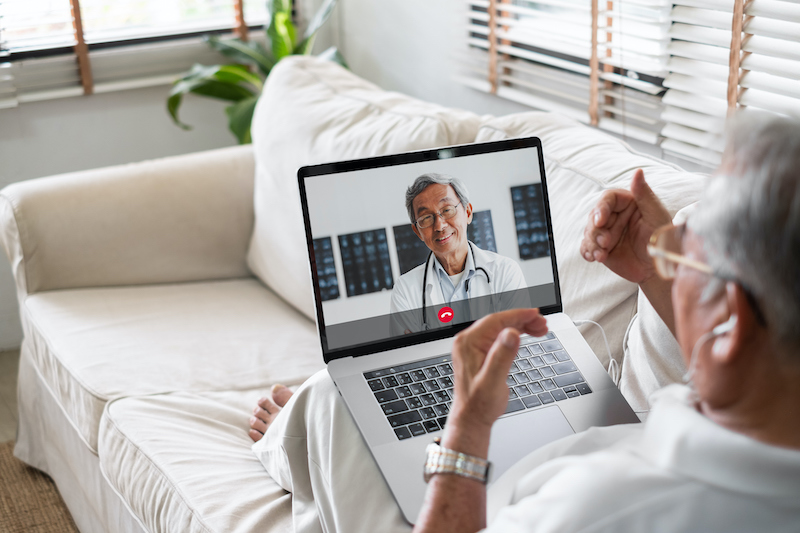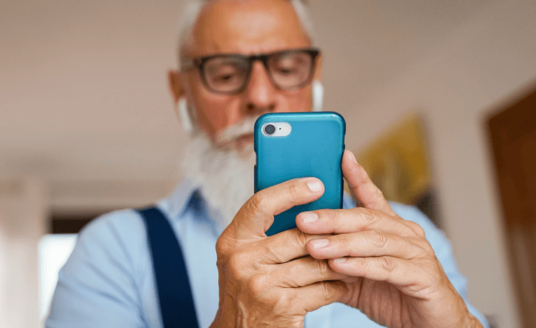Fifty years ago, house calls went the way of tie-dye shirts and bell-bottom pants. Today, they are back—in a slightly different version that combines technology with human assessment called telehealth.
Also known as telemedicine, telehealth enables health care providers to remotely deliver clinical health services and information to patients via interactive and video telecommunications through devices like smartphones, tablets, home computers, or laptops. The connection is made through a program, app, or web site with video and audio capabilities.
Not only can physicians address a number of health issues via virtual medicine, but mental health professionals can now treat patients online, as well. These providers can perform evaluations, arrange senior in-home care, prescribe medications and electronically send the prescription to a pharmacy for pickup or delivery, facilitate treatments, and provide therapy.
Sometimes called telepsychiatry, research has found overall experiences using telehealth have been positive among all age groups. Some people even prefer it over in-person care–particularly those with physical limitations that would make travel and an office visit challenging.
The Need for Telehealth
Late-life depression is often missed by medical professionals, and can be caused by certain illnesses and medications. This is because seniors may show different symptoms than younger people. Seniors or caretakers should consult with a physician to rule out any illnesses or medications that may be contributing to the depression.
Depression can cause severe symptoms, affecting how seniors feel, think, and handle daily activities. Difficulty eating, sleeping, and completing daily activities may last for weeks. If these feelings persist, it may be a case of clinical depression, which usually requires treatment to get better.
Other senior mental health issues may include anxiety and panic disorders, as well as late-onset bipolar disorder.
Other Important Benefits
Telehealth provides access to therapists or mental health professionals in rural areas where access might be challenging. With this technology, you can receive effective, high-quality mental health care no matter where you live.
There is no office room to sit in, waiting to be called. You are in the comfort and safety of your own home. When you seek treatment via telehealth, you get immediate one-on-one attention. Since the appointment is completely private, there is no need to feel any embarrassment or stigma about discussing any mental health issues you face.
Plus, outcomes for depression treatment via telehealth have shown significantly positive results.
Help with Making the Most of the Connection
If you struggle with computers, have a friend or family member assist you with your telehealth appointments until you get comfortable with the process, and write down instructions to refer to later. Also, other seniors who are familiar with virtual medicine can help explain it to you.
Take notes as your health professional speaks with you. Be prepared to talk about any new or worsening symptoms you are experiencing. Having a friend or relative present may assist you with listening and recording information, and asking questions of the health professional. If you are unclear about what is being said, ask for clarification.
The AARP provides more information on how to set up an appointment and prepare for the telehealth visit.
Read our blog for more information on the benefits of technology to seniors.
Back to All Posts


